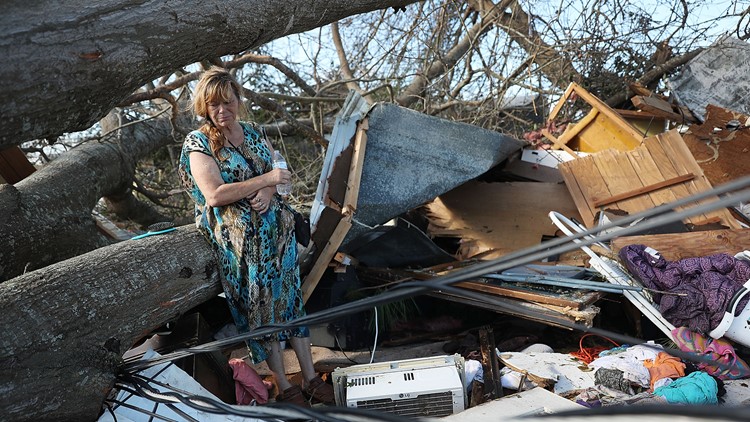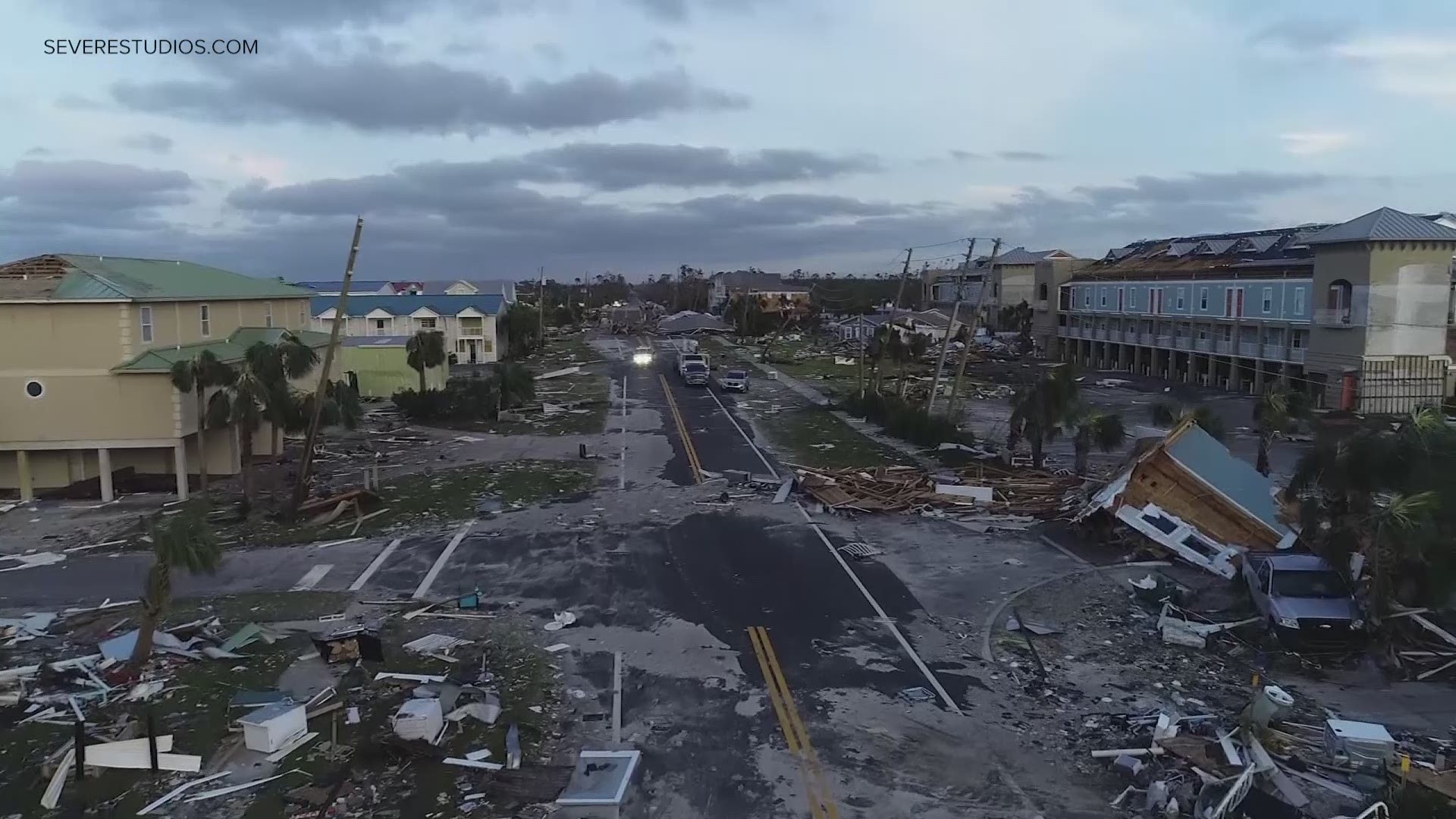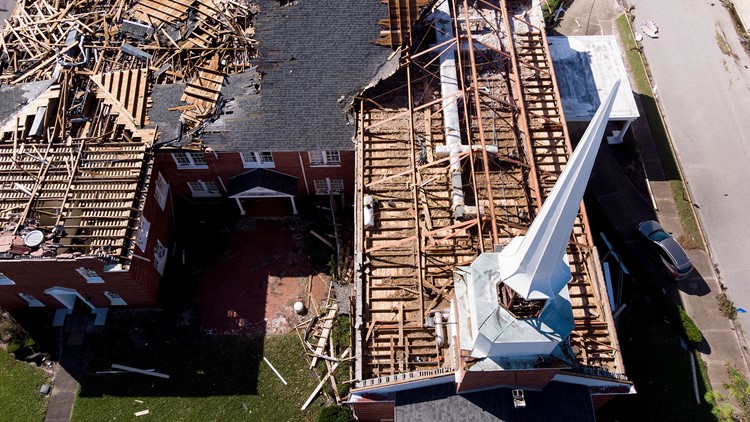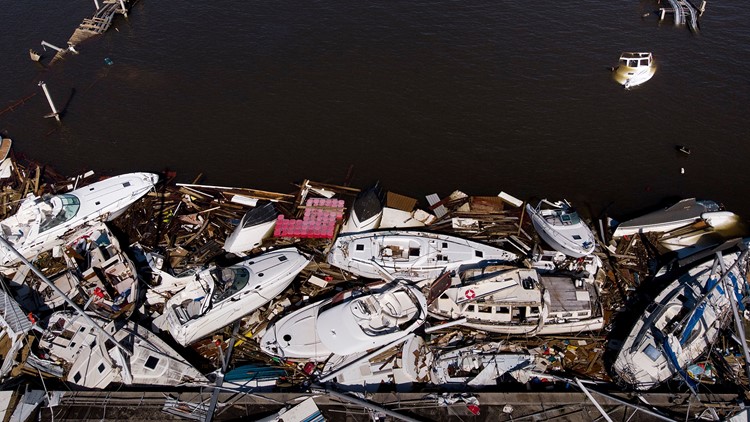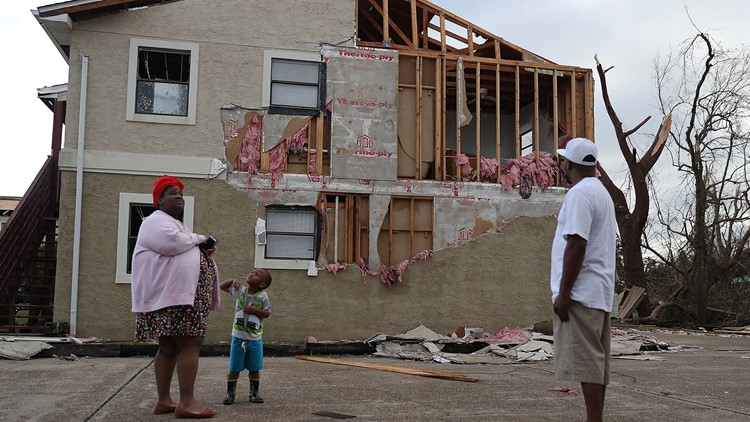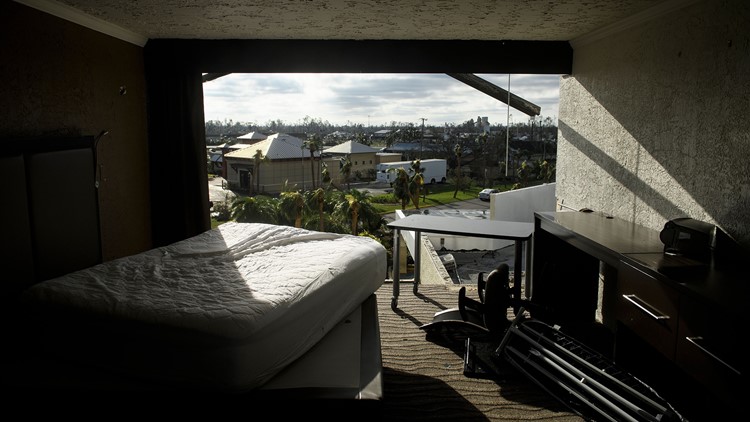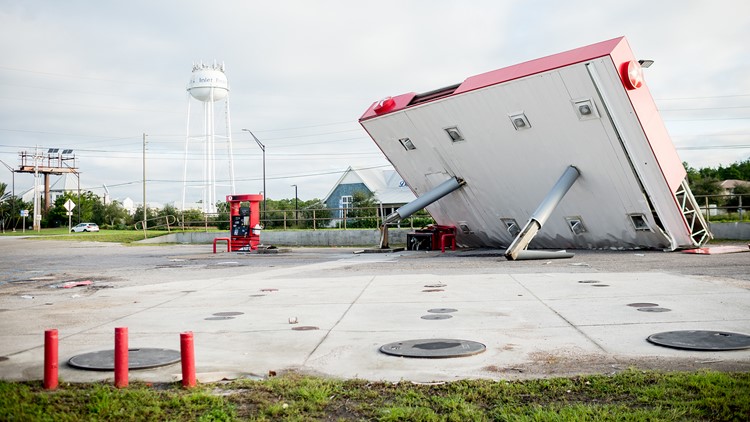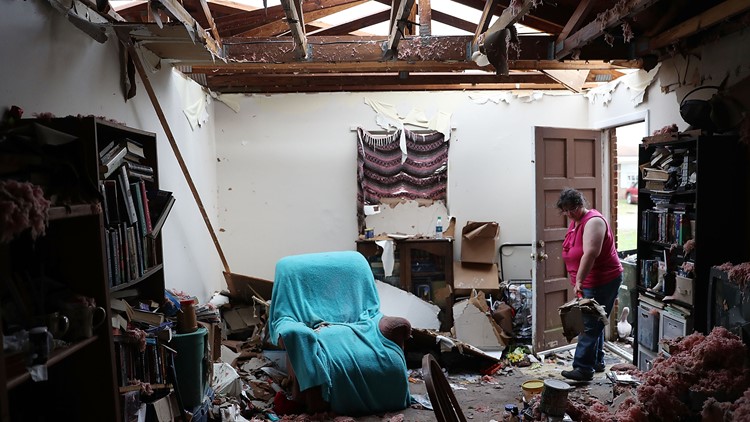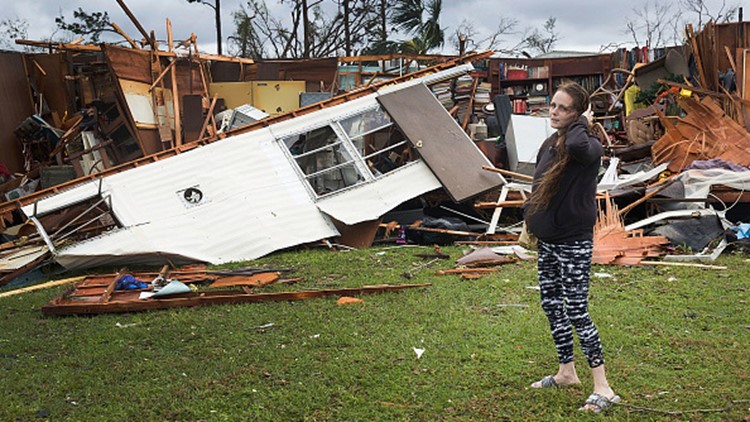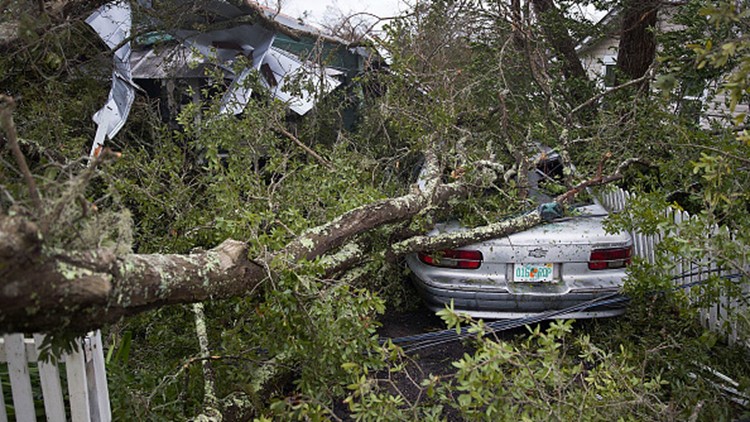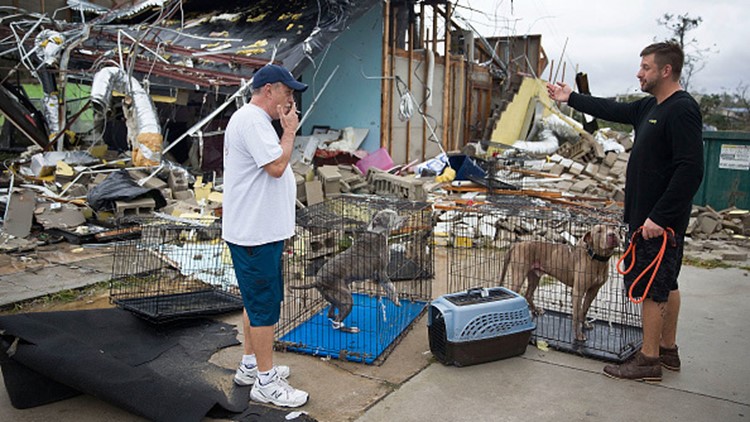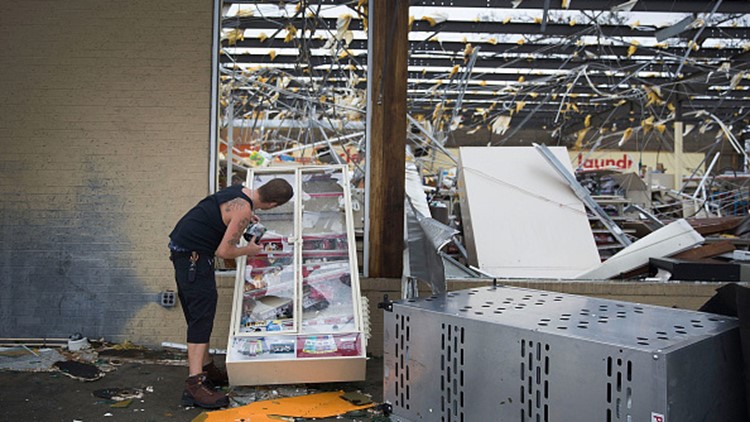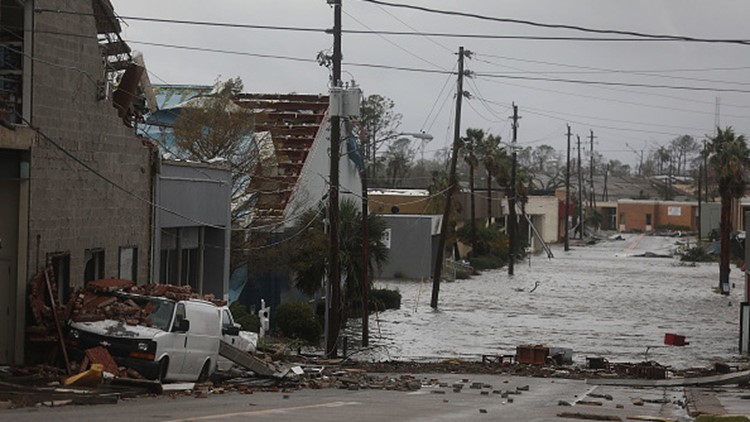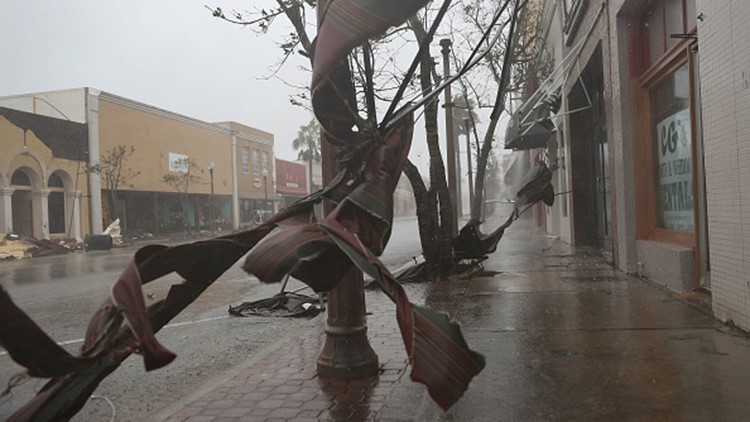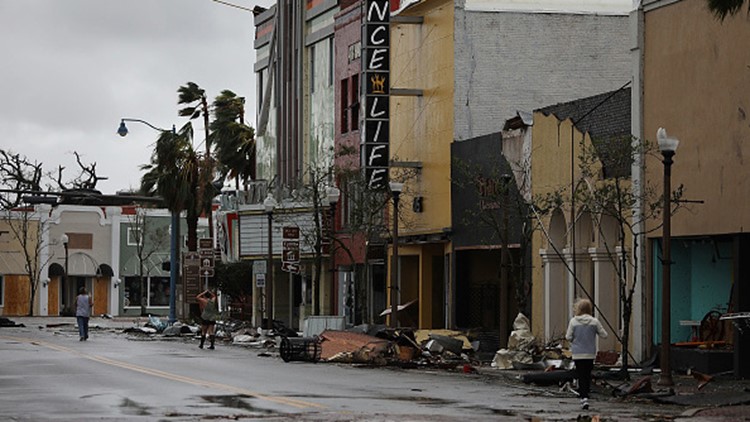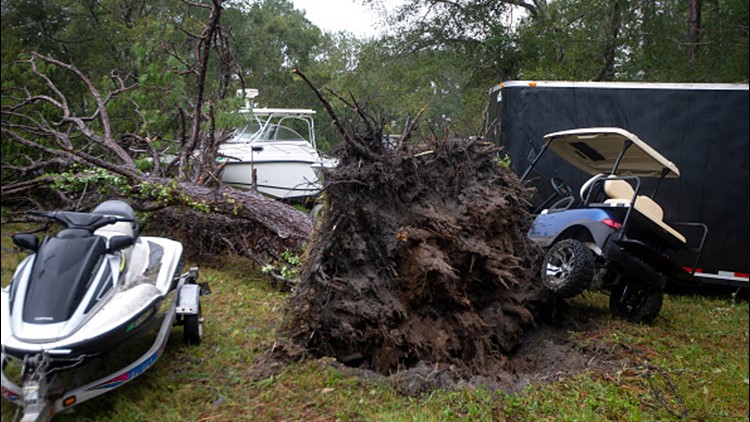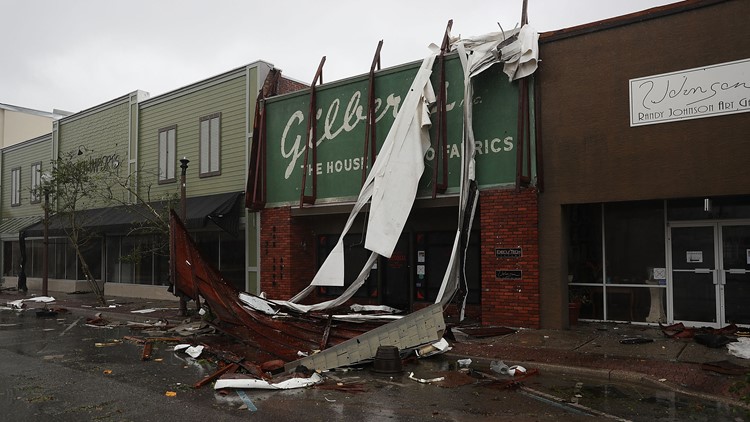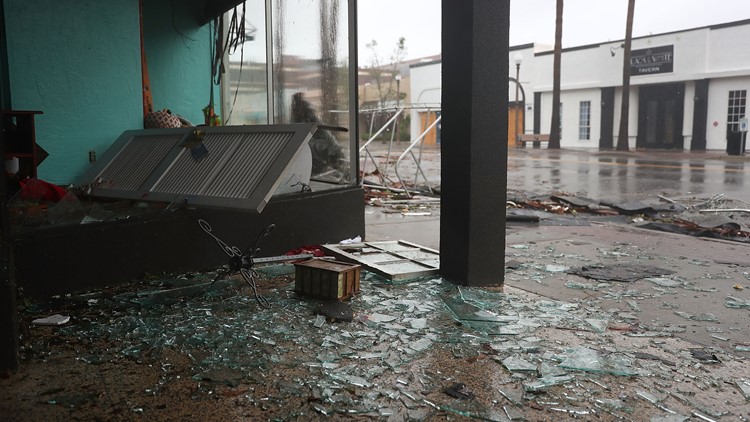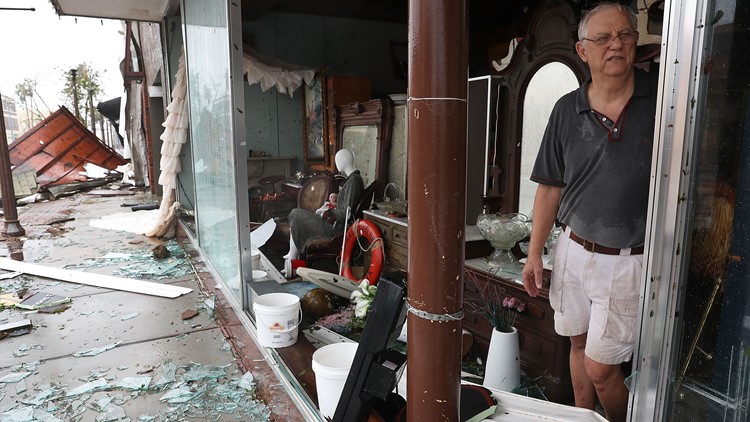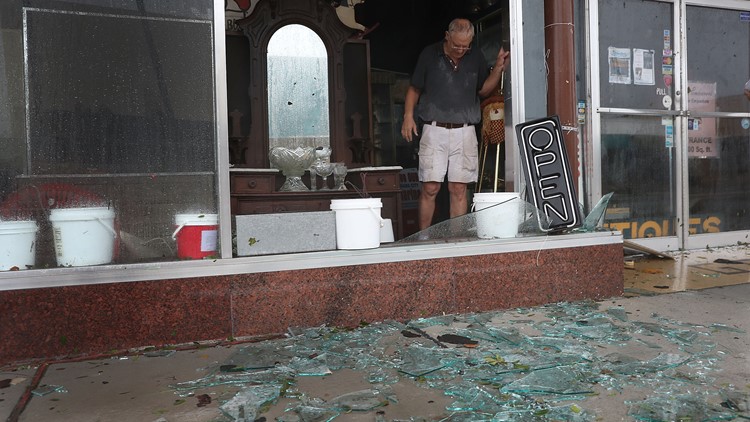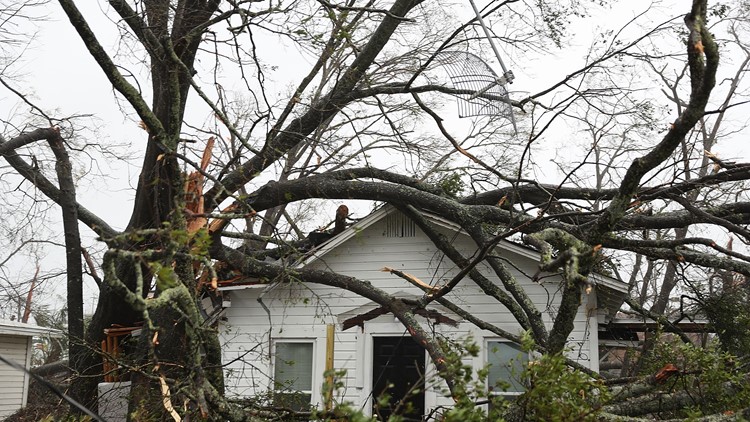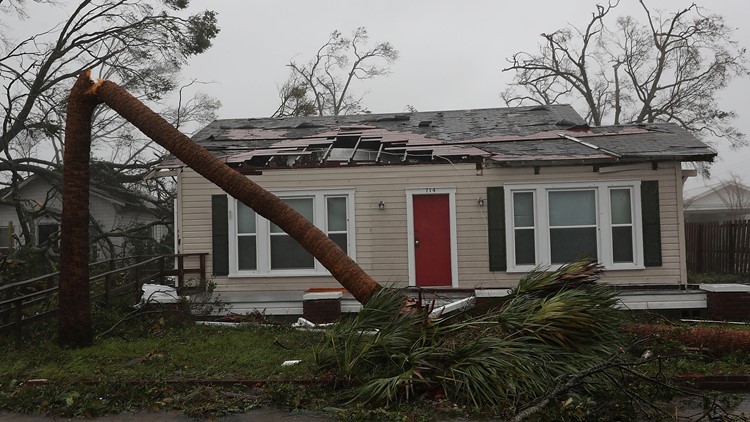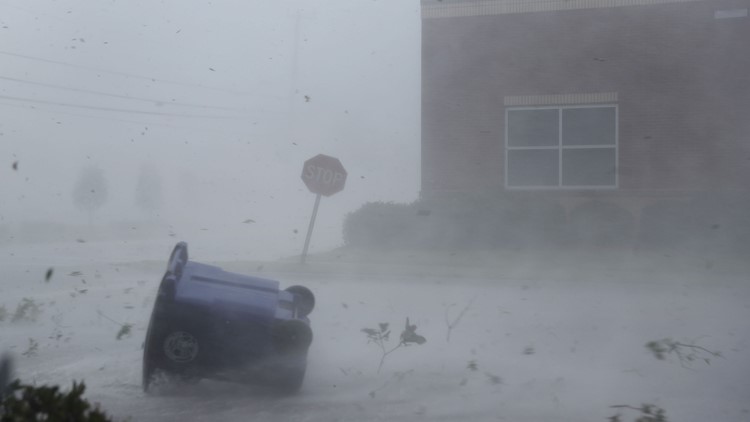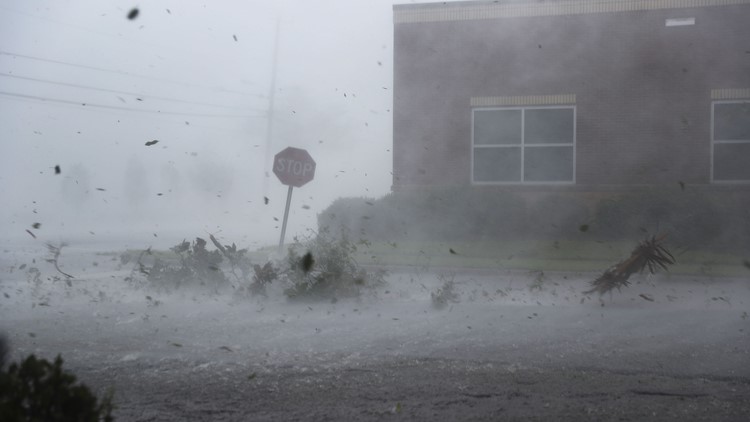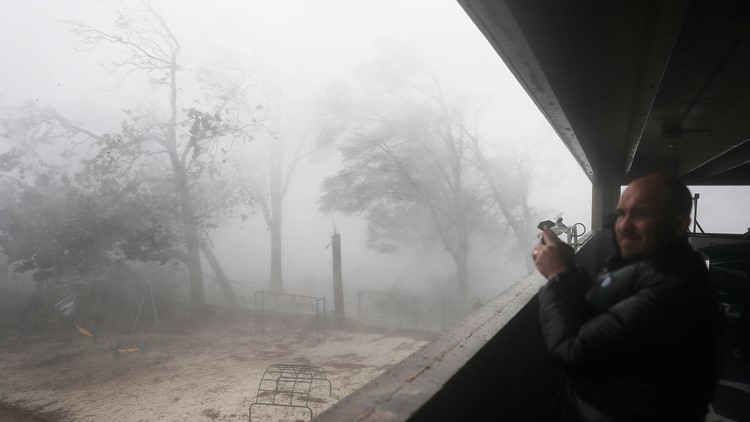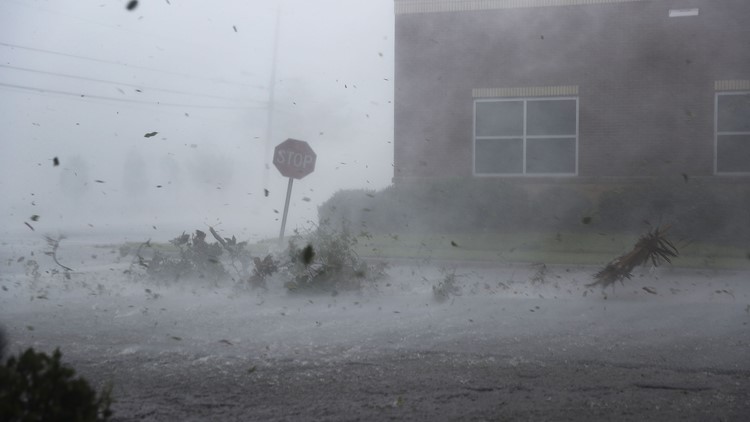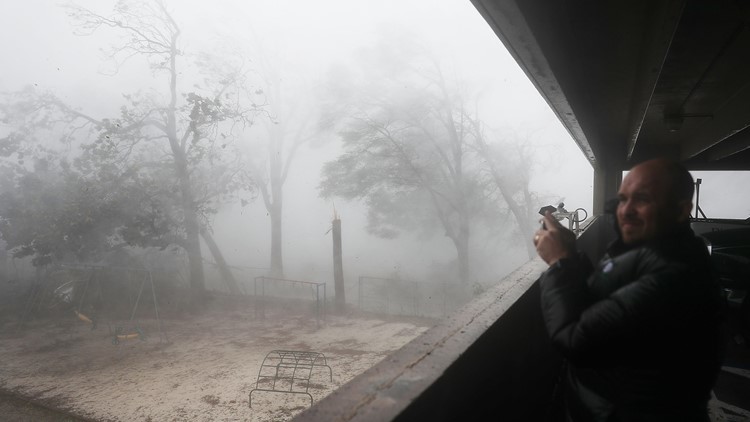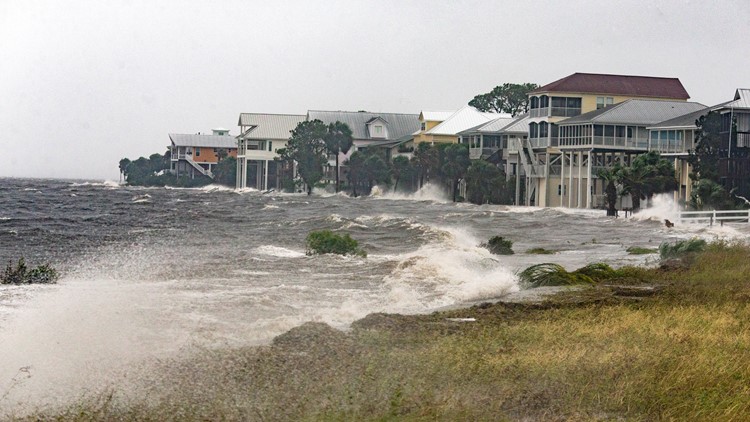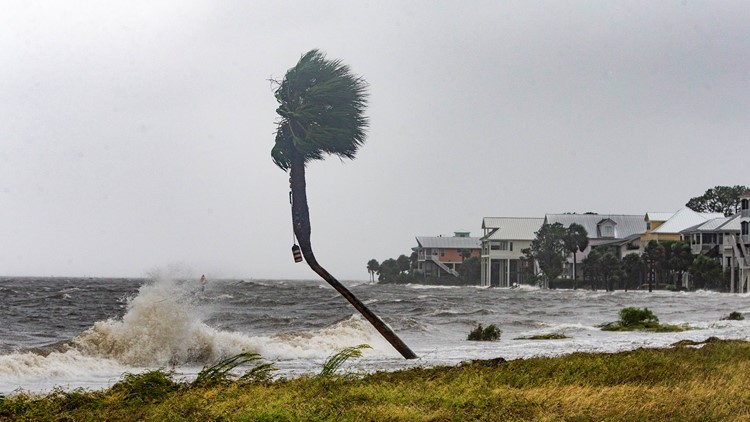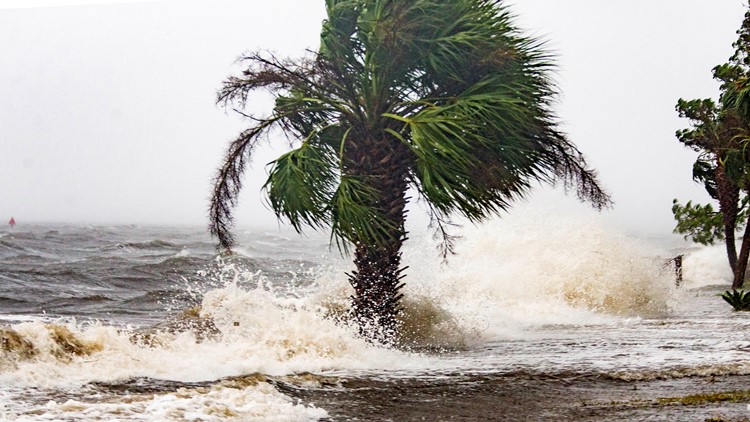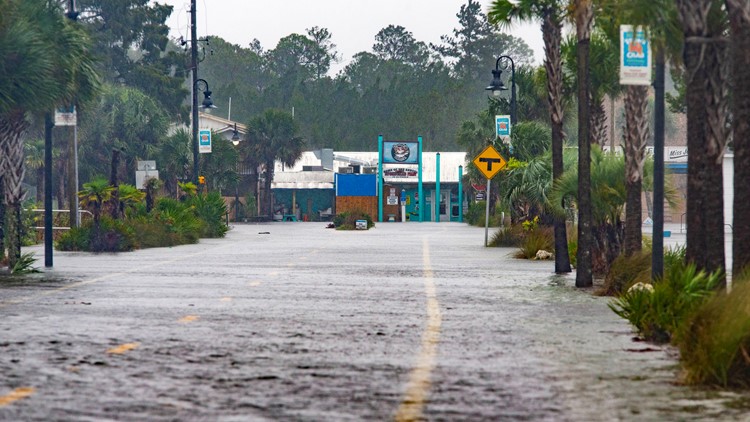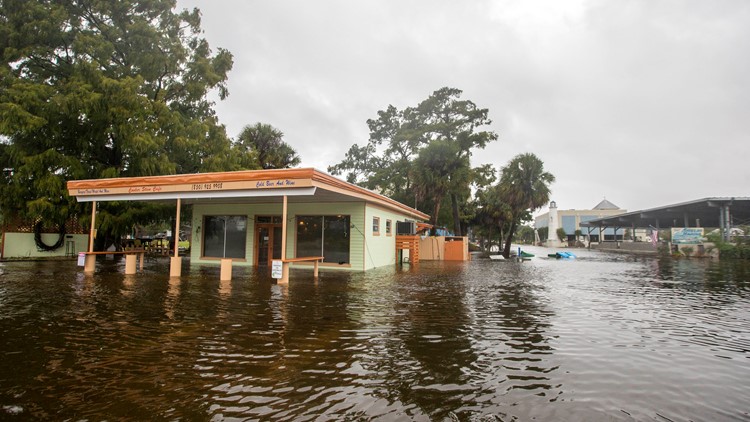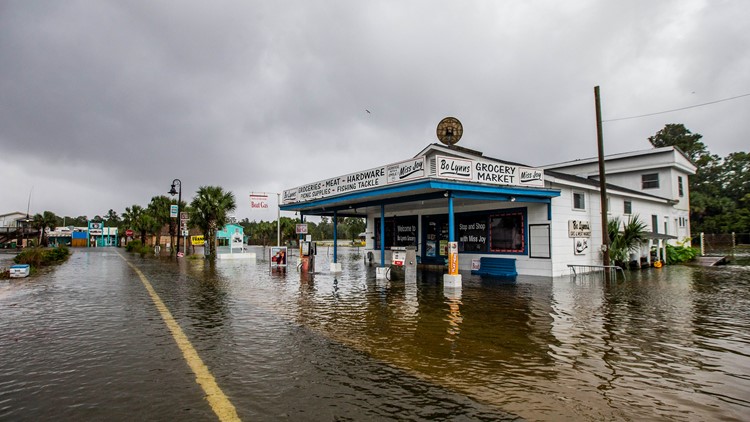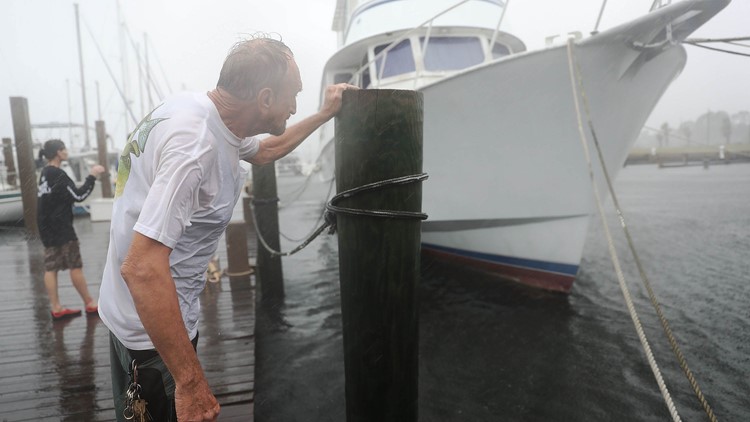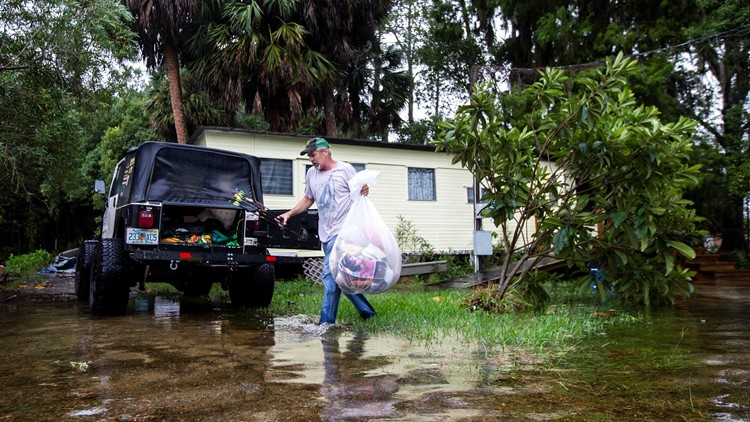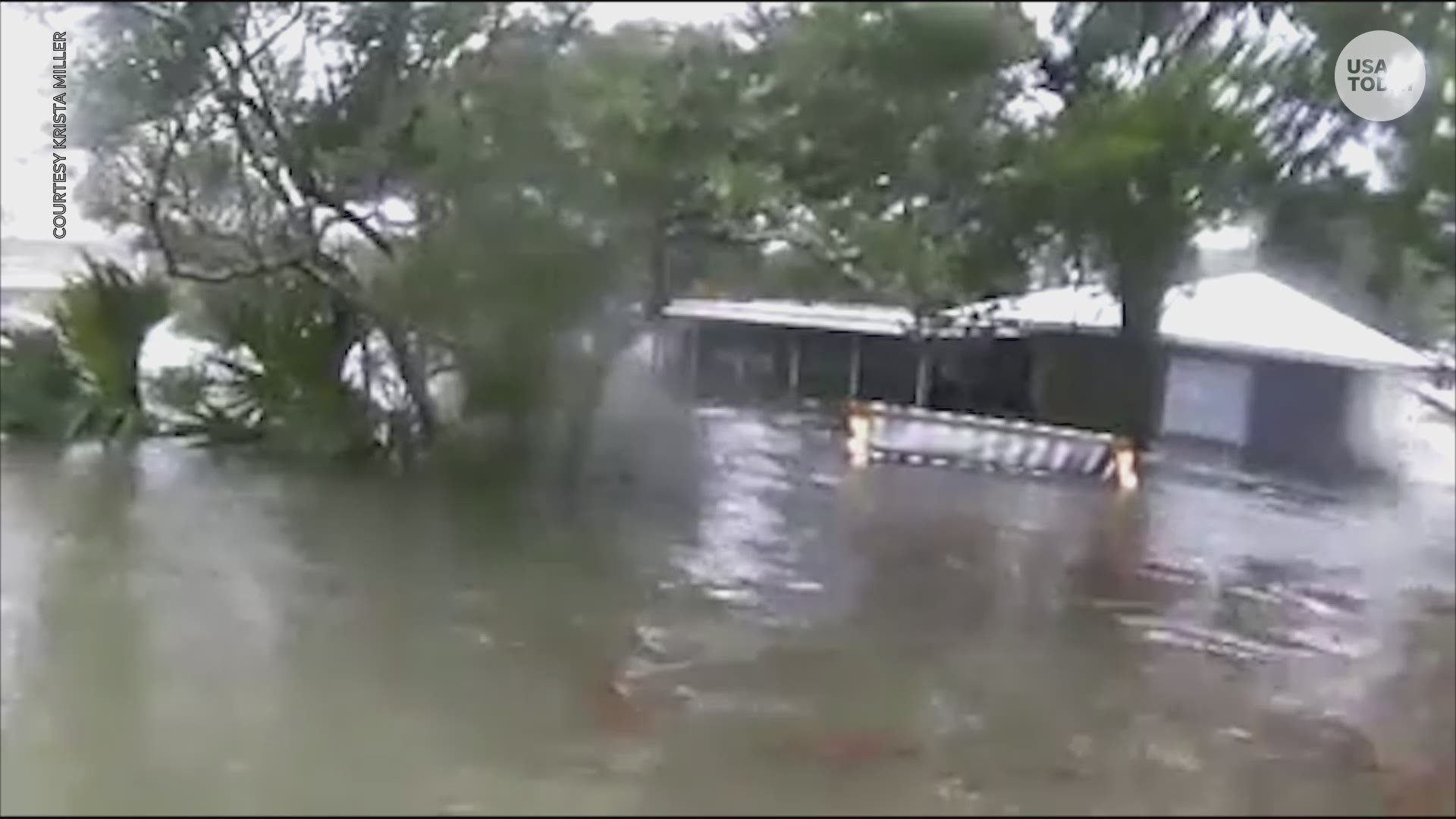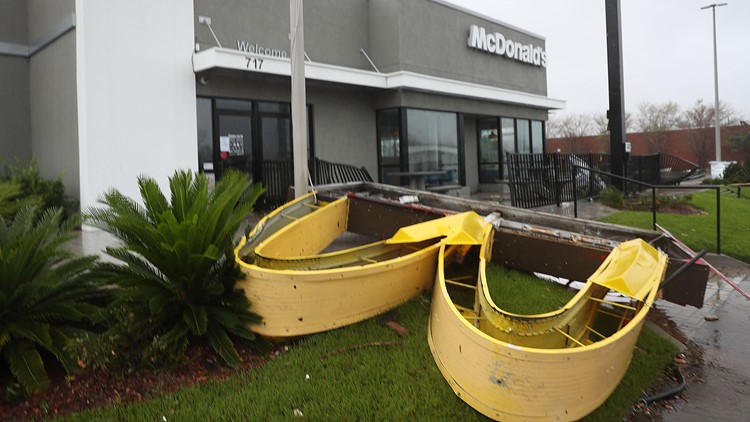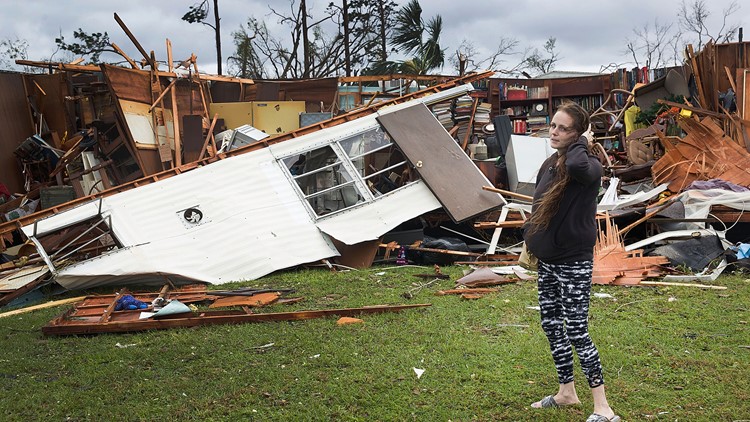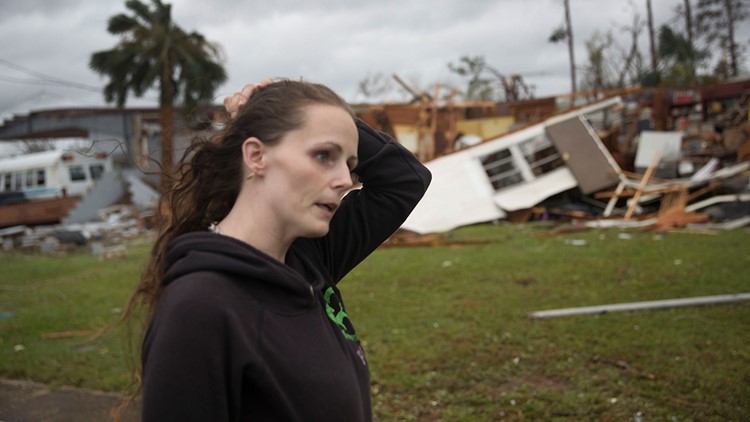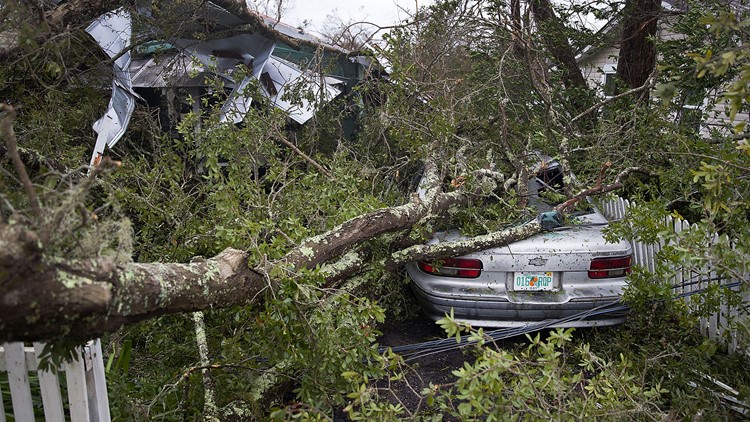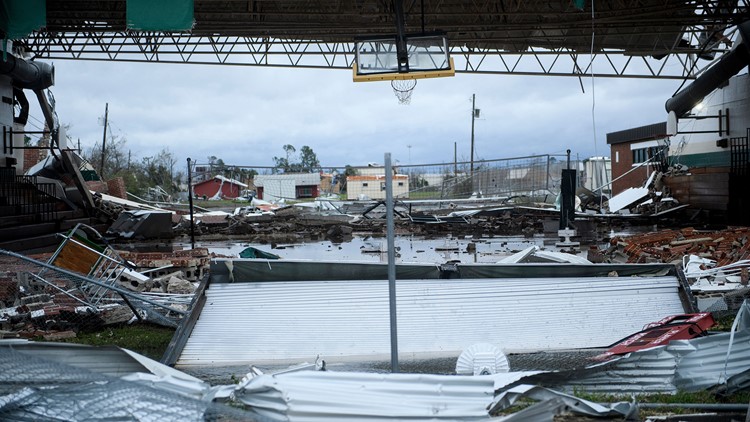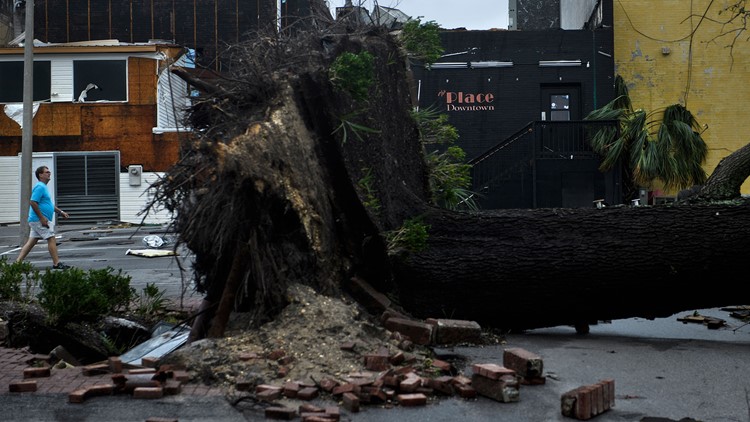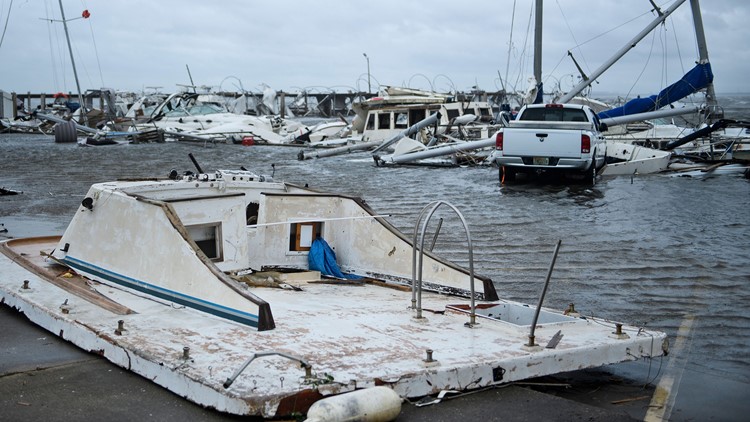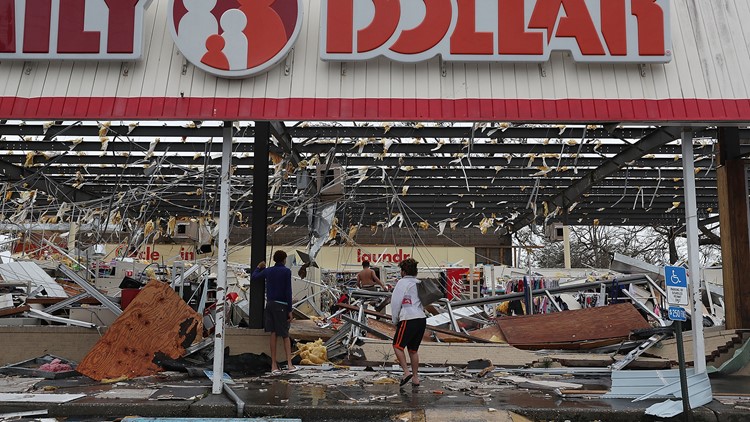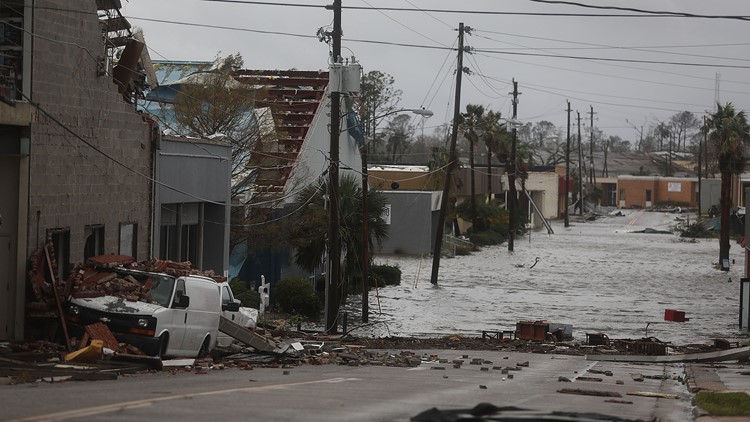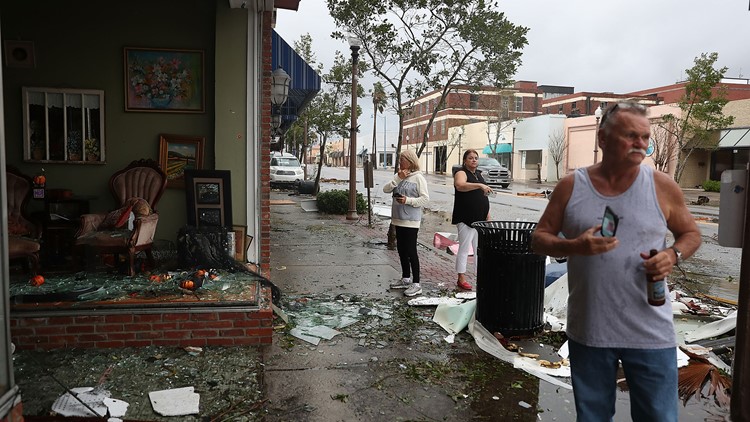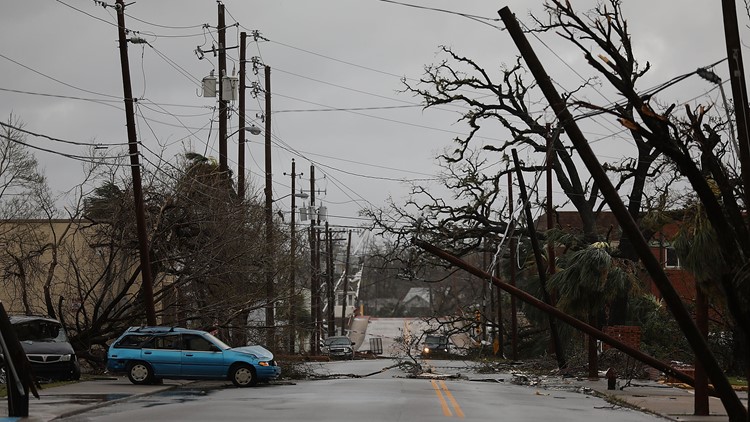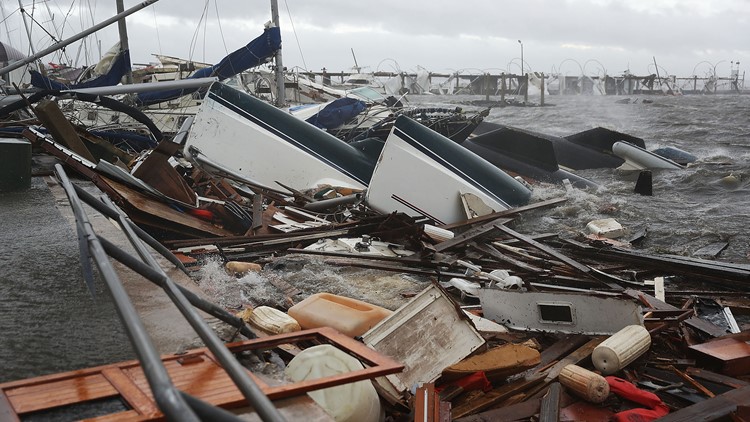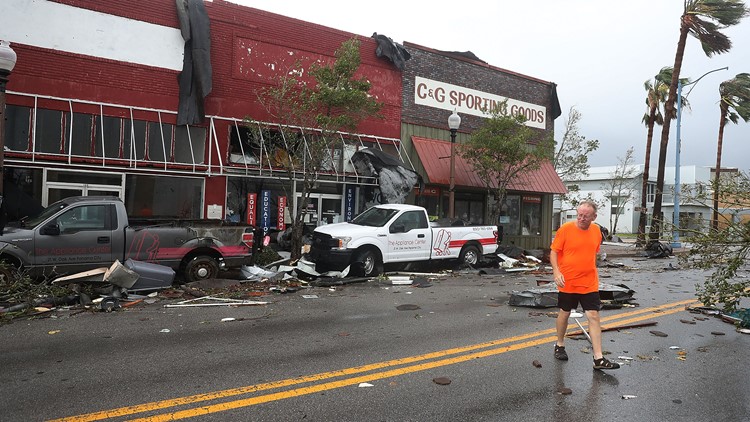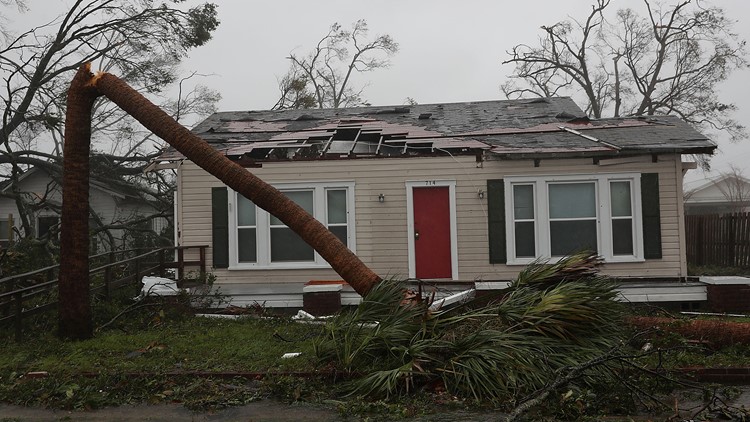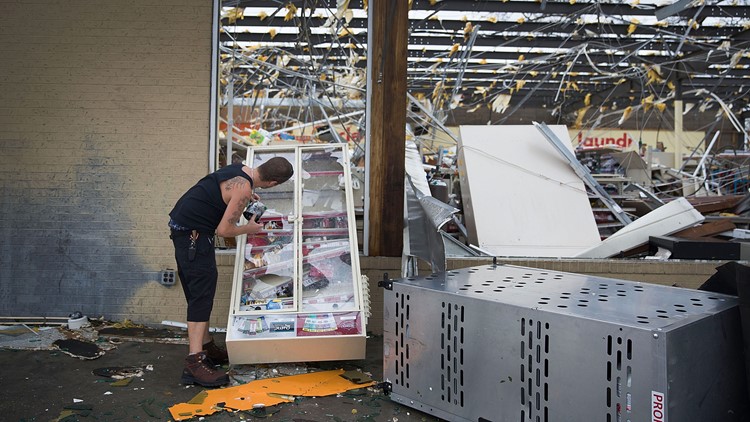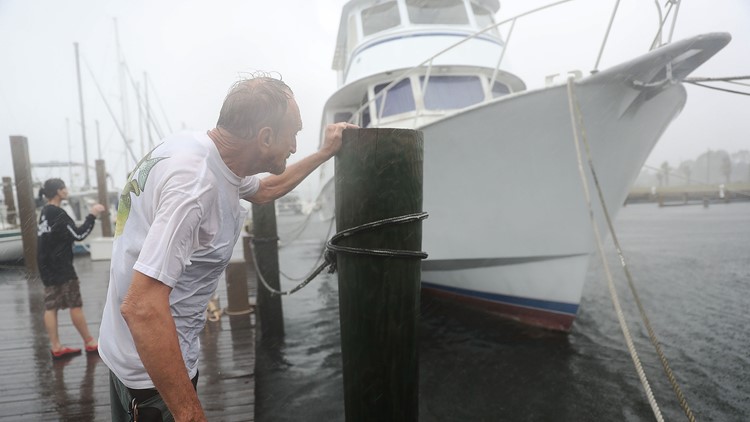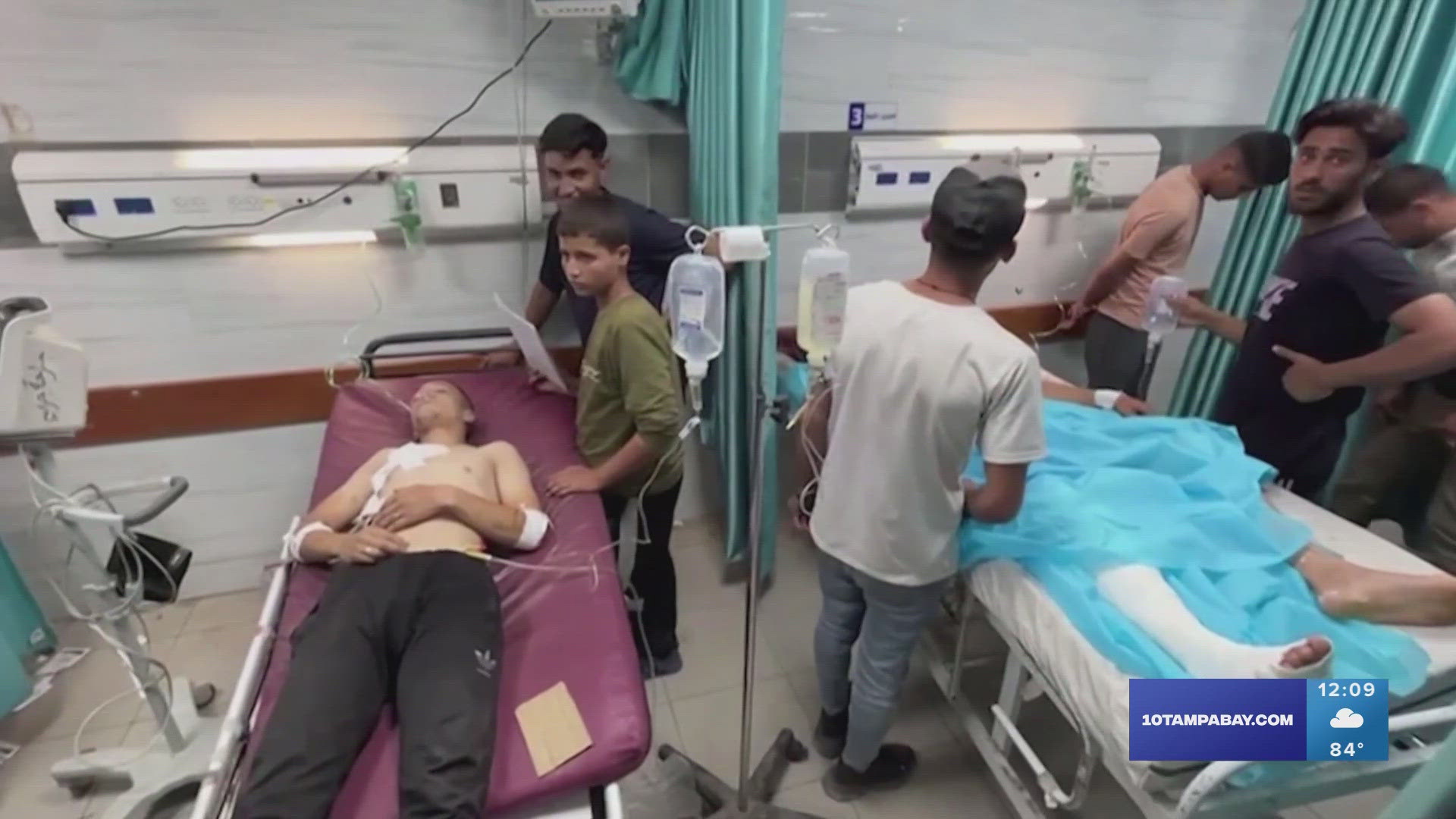PANAMA CITY, Fla. — The devastation inflicted by Hurricane Michael came into focus Thursday with rows upon rows of homes found smashed to pieces, and search crews began making their way into the stricken areas in hopes of accounting for hundreds of people who may have defied evacuation orders.
At least six deaths were blamed on Michael, the most powerful hurricane to hit the continental U.S. in over 50 years, and it wasn't done yet: Though reduced to a tropical storm, it brought flash flooding to North Carolina and Virginia, soaking areas still recovering from Hurricane Florence.
Under a perfectly clear blue sky, families living along the Florida Panhandle emerged tentatively from darkened shelters and hotels to a perilous landscape of shattered homes and shopping centers, beeping security alarms, wailing sirens and hovering helicopters.
Gov. Rick Scott said the Panhandle woke up to "unimaginable destruction."
"So many lives have been changed forever. So many families have lost everything," he said.
The full extent of Michael's fury was only slowly becoming clear, with some of the hardest-hit areas difficult to reach because of roads blocked by debris or water. An 80-mile stretch of Interstate 10, the main east-west route along the Panhandle, was closed.
Some of the worst damage was in Mexico Beach, where the hurricane crashed ashore Wednesday as a Category 4 monster with 155 mph (250 kph) winds and a storm surge of 9 feet (2.7 meters). Video from a drone revealed widespread devastation across the town of about 1,000 people.
Entire blocks of homes near the beach were obliterated, reduced to nothing but concrete slabs in the sand. Rows and rows of other homes were turned into piles of splintered lumber or were crumpled and slumped at odd angles. Entire roofs were torn away and dropped onto a road. Boats were tossed ashore like toys.
A National Guard team got into Mexico Beach and found 20 survivors overnight, and more crews were pushing into the area in the morning, with the fate of many residents unknown, authorities said. State officials said 285 people in Mexico Beach had refused to leave ahead of the hurricane despite a mandatory evacuation order.
Mishelle McPherson and her ex-husband searched for the elderly mother of a friend. The woman lived in a small cinderblock house about 150 yards from the Gulf and thought she would be OK.
Her home was reduced to crumbled cinderblocks and pieces of floor tile.
"Aggy! Aggy!" McPherson yelled. The only sound that came back was the echo from the half-demolished building and the pounding of the surf.
"Do you think her body would be here? Do you think it would have floated away?" she asked.
As she walked down the street, McPherson pointed out pieces of what had been the woman's house: "That's the blade from her ceiling fan. That's her floor tile."
As thousands of National Guard troops, law enforcement officers and medical teams fanned out, the governor pleaded with people in the devastated areas to stay away for now because of fallen trees, power lines and other debris.
"I know you just want to go home. You want to check on things and begin the recovery process," Scott said. But "we have to make sure things are safe."
PHOTOS: Hurricane Michael slams Florida Panhandle
Over 900,000 homes and businesses in Florida, Alabama, Georgia and the Carolinas were without power.
The Coast Guard said it rescued at least 27 people before and after the hurricane came ashore, mostly from homes along the Florida coastline, and searched for more victims.
Among those brought to safety were nine people rescued by helicopter from a bathroom of their home in Panama City, another one of the hardest-hit spots, after their roof collapsed, Petty Officer 3rd Class Ronald Hodges said.
In Panama City, most homes were still standing, but no property was left undamaged. Downed power lines lay nearly everywhere. Roofs had been peeled off and carried away. Aluminum siding was shredded to ribbons. Homes were split open by fallen trees.
Hundreds of cars had broken windows. Twisted street signs lay on the ground. Pine trees were stripped and snapped off about 20 feet high.
The hurricane also damaged hospitals and nursing homes in the Panama City area, and officials worked to evacuate hundreds of patients. The damage at Bay Medical Sacred Heart included blown-out windows, a cracked exterior wall and a roof collapse in a maintenance building. No patients were hurt, the hospital said.
The state mental hospital in Chattahoochee, which has a section for the criminally insane, was cut off by land, and food and supplies were being flown in, authorities said.
Four people in Gredsden County, Florida, a driver in Iredell County, North Carolina, and an 11-year-old girl in Georgia has died as a result of the storm.
Steve Sweet, who lived in Gretna, Florida, was killed by a falling tree.
Sarah Radney, who lived in Seminole County, Georgia, died when the winds picked up a carport and dropped it on her home. One of the carport's legs punctured the roof and hit her in the head.
The other four victims' identities are still unknown at this time.
As of 11 p.m. EDT, Michael was centered about 15 miles northeast of Norfolk, Virginia, and about to head out into the Atlantic, with winds of 50 mph. It was moving northeast at 25 mph.
Forecasters said it could drop up to 7 inches (18 centimeters) of rain over the Carolinas and Virginia before pushing out to sea. In North Carolina's mountains, motorists had to be rescued from cars trapped by high water.
"For North Carolina, Michael isn't as bad as Florence, but it adds unwelcome insult to injury, so we must be on alert," Gov. Roy Cooper said.
More than 375,000 people up and down the Gulf Coast were ordered or urged to clear out as Michael closed in. But it moved fast and intensified quickly, and emergency authorities lamented that many people ignored the warnings.
"Why people didn't evacuate is something we should be studying," said Craig Fugate, former director of the Federal Emergency Management Agency and a former Florida state emergency management chief. "Is there more the government can do? But we ask that every time."
Based on its internal barometric pressure, Michael was the third most powerful hurricane to hit the U.S. mainland, behind the unnamed Labor Day storm of 1935 and Camille in 1969. Based on wind speed, it was the fourth-strongest, behind the Labor Day storm (184 mph, or 296 kph), Camille and Andrew in 1992.
PHOTOS: Panama City, Fla., devastated by Hurricane Michael
___
Associated Press writers Tamara Lush in St. Petersburg, Florida; Terry Spencer in Fort Lauderdale, Florida; Freida Frisaro in Miami; Brendan Farrington in St. Marks, Florida; Russ Bynum in Keaton Beach, Florida; Jonathan Drew in Raleigh, North Carolina, and Seth Borenstein in Kensington, Maryland, contributed to this story.


